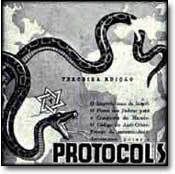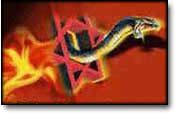Philby’s Partridge
is an ugly bird. A native of northern Yemen, it looks vaguely like a
New York City pigeon, but significantly worse—as if the pigeon had been
in a bar fight. Some people worry that the bird, named for British
explorer and possible Nazi collaborator Harry St. John Philby,
might become endangered due to recent over-hunting and the destruction
of its habitat. And yet the conservation movement to save the partridge
is like tourism in its natural habitat in the tribal areas of Northern
Yemen: It doesn’t exist.
Perhaps the only person in the world whose mission is to save these
ugly birds, in fact, is Rabbi Chaim Loike, a rabbinic coordinator at the
Orthodox Union. And his concern is less ecological than gastronomical:
Philby’s Partridge, Loike says, may be kosher—and he wants to make sure
the species survives so that future generations of Jews might eat it.
***
Loike has long had an interest in which birds are kosher. Taped to
the door of his office in Manhattan is a hand-signed letter from the
O.U.’s lead posek (decider), Rabbi Yisroel Belsky, stating that a wild turkey is the same animal as a domestic turkey and therefore kosher.
That letter helped resolve a question over kashrut—although the wild
turkey that Loike brought to his office at the O.U. wasn’t so excited to
be welcomed by the Jewish community; it flew around and destroyed a
computer keyboard. “I don’t know what he had against the keyboard,”
Loike explained earnestly.
Turkeys aside, Loike’s focus is mainly on exotic birds. During his seven-year tenure at the O.U., he has raised Chukar Partridges, White Runner Ducks (which he describes as “bowling balls with legs”), Mallards, and even Laysan Teals—which at the time were considered extinct, although they were later reclassified. He attempted to prove that a greenfinch, a bird mentioned by Rashi,
was kosher and used in a sacrifice during the time of the First and
Second Temples. He also helped establish that different species of quail
are kosher. In gratitude for his efforts, a Hasidic rebbe once gave him
his African gray parrot. “You wouldn’t believe how much it talked,”
Loike said.
With his unique history, Loike may be the world’s foremost halachic
expert on birds. “When we have a question on the ID of a particular
species or sub-species, he is who we contact,” said Ari Greenspan, a
dentist in Jerusalem who also moonlights as a kosher bird enthusiast.
An autodidact, Loike took a course in shechita, ritual
slaughtering, when he was a student at Yeshiva University’s ordination
program. The next year, Y.U. asked him to teach the course, and he went
to a local meat market and realized that he didn’t know which birds were
kosher. He called up the O.U., and the organization agreed to help fund
his research, which mainly consisted of finding old Eastern European shochtim, ritual slaughterers, and getting them to identify which birds they had slaughtered in the past.
“I was the one who had all the information—by accident,” Loike said.
At first glance, the Torah’s laws about kosher birds seem simple.
While the Bible offers specific parameters about which land animals or
fish are kosher, there are no general traits specified to determine
whether birds are kosher. Instead the Torah gives a list of 24 forbidden
birds in Deuteronomy 14 and Leviticus 11. However, there’s a Talmudic
Catch-22: No one is exactly sure which species the 24 listed birds are.
“Every bird not on the list should be kosher, theoretically,” Loike explained, “But we don’t know what’s on the list.”
Even the two most commonly understood birds, a chasidov (stork) and an orev (raven), are subject to a dispute in the commentaries. The Talmudic tractate Chullin lists four signs
by which a bird can be considered kosher (discovered, according to a
commentator to the Tosafot, by Noah in the ark): whether the bird is
predatory (predatory birds are not kosher); whether it has an extra toe
(birds without an “extra” toe are not kosher); whether there is a crop
at the base of its neck (if there is not a crop, the bird is not
kosher); and whether it has a gizzard in which the membranes will
separate when rubbed by hand (if it does not, it is not kosher).
However, while some Sephardic Jews still adhere to those four signs,
later commentators ruled those distinctions invalid as the basis for kashrut.
That is why Loike has his job. Orthodox Jews are only permitted to eat birds that have a mesorah—a tradition that they were once eaten by a Jewish community in the past, or if they can mate with another bird that has a mesorah attached to it. “We can’t make anything
kosher,” explained Loike. “It’s either kosher or it’s not. The question
is: Was this bird accepted in a previous generation as kosher? If we
clarify that it was, we can eat it. Otherwise, we leave it as a
mystery.”
***
And that’s where the Philby’s Partridge comes in. About four months
ago, a fan of Loike’s lectures and a donor to the O.U. called him with a
proposition: He believed that Philby’s Partridges were kosher and that
they were becoming endangered. As evidence, the donor pointed out that
it was almost impossible to get the birds in America. Loike was
intrigued.
“They’re the only species of partridges that almost no one was
raising in this country,” Loike said. “With the geopolitical craziness
you never know. Sometimes it’s very good and sometimes it’s very bad.
Philby’s Partridges are a desert species, and uncontrolled hunting can
be dangerous for them.”
Richard Porter, the author of Birds of the Middle East and
an adviser to Birdlife International, a global alliance of conservation
organizations, acknowledged that some species might be under pressure in
Yemen since the political upheavals of the Arab spring. Hunting levels
have increased, even as development encroaches on wild bird habitats.
But he is nonetheless skeptical about the seriousness of the threat.
“Whilst Philby’s Partridge has a restricted range, it would be a
difficult species to eradicate,” Potter explained. “There are far more
urgent conservation issues to deal with in Yemen: Arabian leopard,
Arabian wolf, golden jackal …”
And, in fact, the Philby’s Partridge may not be endangered at all.
The International Union for the Conservation of Nature classified the
birds’ status as Least Endangered. Abdulrahman F. Al-Eryani, the former
minister of Water and Environment for Yemen, was blunt in his
assessment: “Philby’s Partridges are not in any way endangered in the
high mountain in Yemen,” he said. “On the contrary, it is almost a pest
for the poor sorghum farmers in these areas. There are more urgent and
pending conservation issues to help with.”
Loike was not put off by such criticism.
“This isn’t like saving panda bears,” he said, “this is a pittance of
resources.” And even if the birds weren’t endangered on a global scale
or in their native Yemen, he added, they aren’t widely available in
America and hardly any zoos keep them. Loike and his donor figured they
could save the bird without much difficulty.
“If I’m right, this bird is in trouble,” Loike said. “If I’m wrong, who cares?”
http://www.tabletmag.com/jewish-life-and-religion/123100/eat-this-endangered-species?utm_source=rss&utm_medium=rss&utm_campaign=eat-this-endangered-species&utm_source=rss&utm_medium=rss&utm_campaign=eat-this-endangered-species
Tuesday, 5 February 2013
It's Kosher: Rabbi Saves Endangered Species by Eating Them
Posted @
06:12
![]()
Subscribe to:
Post Comments (Atom)
![[9_10_s22.jpg]](https://blogger.googleusercontent.com/img/b/R29vZ2xl/AVvXsEjTXnQay9wzz0E6nVHrVhaHKoq_zYXDqZjijHlNDQzj90MZzInrCuVX4ciFYCiBfZ7lhlgr2bBhhnl7ddWbhdih5JbXjQYbA605TNyiq046bQqjG2A4S-nHTmh1VBTQSG6tmc23wq47QQ/s1600/9_10_s22.jpg)




No comments:
Post a Comment